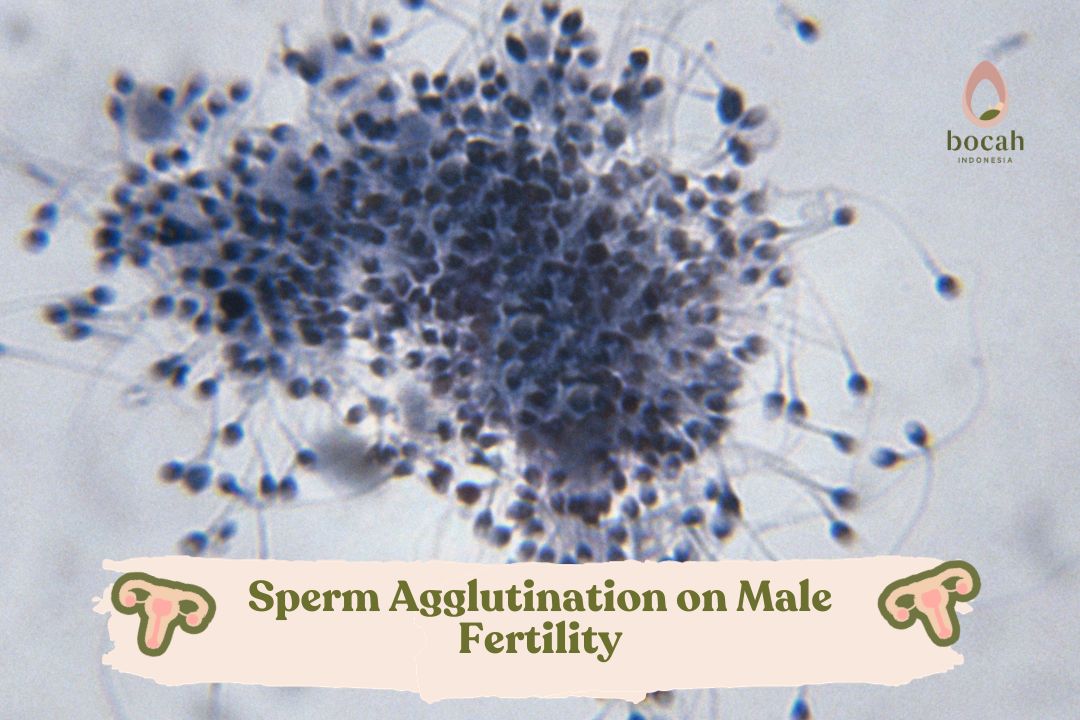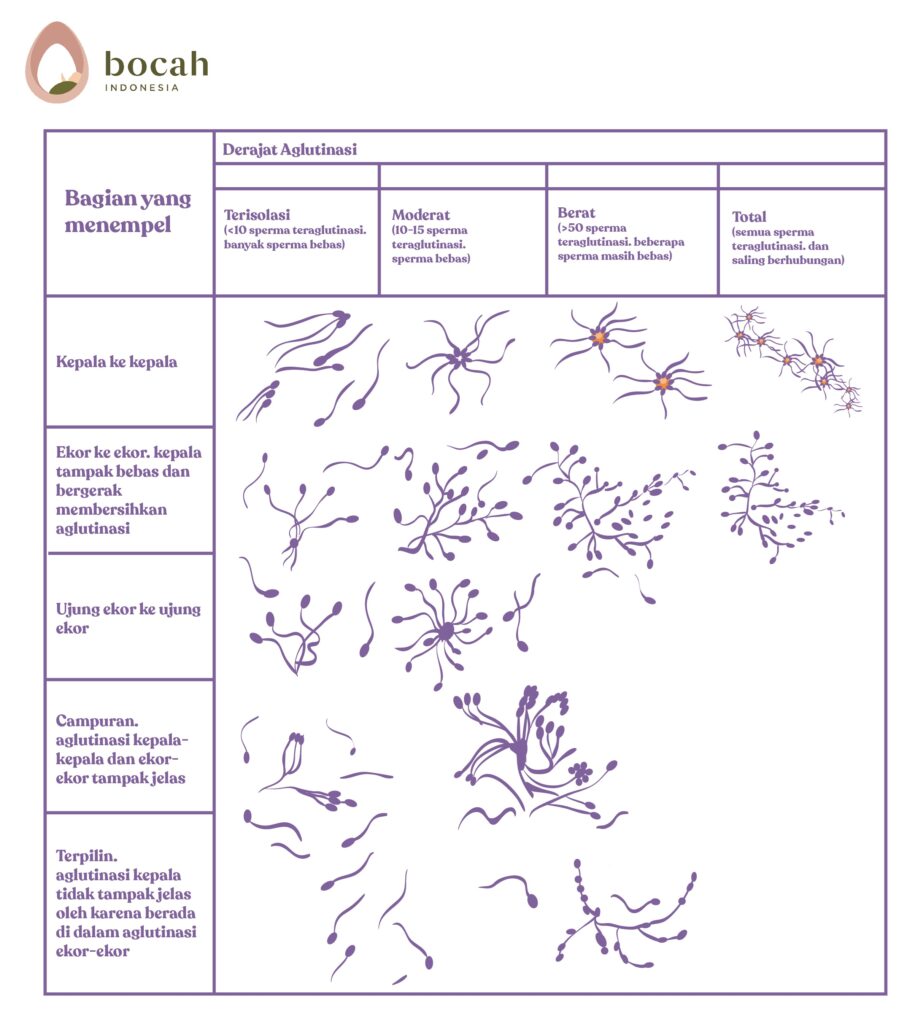Clumped Sperm, What are the Effects?

Apart from the quantity, movement, and shape of sperm, another factor affecting male fertility is sperm clumping or agglutination.
When discussing male infertility, one often overlooked factor is sperm quality. Although a low sperm count or poor motility (movement) is more commonly mentioned, clumped sperm is another issue that can affect a man’s ability to conceive.
Sperm clumping, or medically termed agglutination, indicates a more complex form of infertility involving immunological factors. That’s why it becomes an important factor to consider when searching for causes of infertility.
What is Sperm Agglutination?
Sperm agglutination is a condition in which sperm stick together (adhesion), forming clusters that can disrupt their movement and their ability to fertilize an egg. This anomaly can be observed during microscopic analysis of a semen sample.
Results from semen analysis can indicate:
Tanya Ferly tentang Promil?
Positive agglutination, indicating motile (optimally moving) sperm clumping together.
Negative agglutination, meaning no motile sperm clumping together.
The areas of sperm clumping can be from head to head, tail to tail, head to tail, or twisted like tangled threads. Clumping usually occurs due to the presence of antisperm antibodies. These antibodies attach to the sperm’s surface and cause them to stick together.
Sperm Agglutination vs. Aggregation
Firstly, it’s necessary to distinguish between agglutination and aggregation. Although agglutination and sperm aggregation might seem similar, there are differences between the two concepts.
Aglutination is when motile sperm or sperm capable of optimal movement stick together. Meanwhile, aggregation is when immotile sperm or those not moving stick together, or when both motile and immotile sperm stick to mucus or other non-sperm cells. Furthermore, sperm aggregation is more non-specific and therefore clinically less significant compared to sperm agglutination.

Clumped sperm can be found in both infertile and fertile men, but when present in large amounts, it can significantly impact fertility. When the agglutination is severe or affects most sperm in the sample, this can substantially reduce the chances of natural conception.
Degree of Sperm Agglutination
There are various degrees of agglutination that have significant consequences for male fertility and the chances of having offspring. This degree of agglutination is examined using a special microscope with a magnification of 200-400 times.
According to the WHO Laboratory Manual for the Examination and Processing of Human Semen 6th edition, there are four degrees of sperm agglutination determined by the number of adhered sperm. Details are described in the table below.

A high proportion of sperm agglutination can be a cause of male infertility. Sperm adhesion inhibits its progressive movement and therefore prevents fertilization. If sperm cells are unable to move properly along the female reproductive tract, they will not be able to meet and fertilize the egg. Pregnancy will not occur.
Causes of Sperm Agglutination
Sperm agglutination can indicate the presence of antisperm antibodies in semen (sperm fluid). These antibodies recognize the membrane or surface layer of sperm cells and bind them, forming clumps. This condition can lead to what is known as immunologic infertility, contributing to about 7 percent of cases of male infertility. The presence of these antibodies can be determined through the Mixed Antiglobulin Reaction (MAR) test.

When interpreting test results, the history of disorders in the male reproductive system needs to be considered, such as the presence of blockages in the sperm ducts or a history of sexually transmitted infections. The presence of antisperm antibodies in patients with low sperm count (oligozoospermia) may reflect a blockage in one side of the sperm ducts. The appearance of these antibodies in infertile patients may be related to Chlamydia or Mycoplasma infections.
Additionally, there are other potential causes of sperm agglutination:
Very high sperm concentration in the semen sample.
Changes in sperm fluid pH due to problems with accessory glands (prostate or Cowper’s) caused by inflammation or infection processes.
Increased body temperature during fever.
Presence of certain bacteria triggering sperm clumping.
Several factors are also believed to increase the presence of sperm agglutination, such as twisted testes, scrotal trauma, varicocele, urinary tract infections, and testicular surgery.
Dealing with Sperm Agglutination
Sperm agglutination is treated according to its cause. If it’s caused by fever or infection, this condition will disappear on its own after the infection is treated and allowed to heal for some time. After that, a re-analysis is done to see if the sperm agglutination has disappeared.
Mild to moderate cases of sperm agglutination can be treated with medication and supplements. Vitamin supplementation is highly recommended, especially vitamin C, which activates the anti-agglutinin protein, a protein that prevents sperm from clumping together.
In severe cases, sperm agglutination may be untreatable. And if a man still desires to have children, the best way to get pregnant is through an IVF program with ICSI (intracytoplasmic sperm injection). Through this method, the sperm will be capacitated first. Meaning, motile sperm capable of moving straight and fast are separated from other sperm that experience agglutination and are immotile (not moving). Next, the best-quality sperm is selected to be inserted into the egg.
Conclusion
Sperm agglutination is a parameter always considered during microscopic examination of semen. Its presence doesn’t always indicate infertility but potentially makes sperm movement difficult and the fertilization of eggs challenging.
- Success rate of IVF in blocked tube cases - 28/03/2024
- Fallopian Tube Blockage: Can It Be Corrected with Surgery? - 22/03/2024
- Can You Get Pregnant with Irregular Periods? - 19/02/2024










